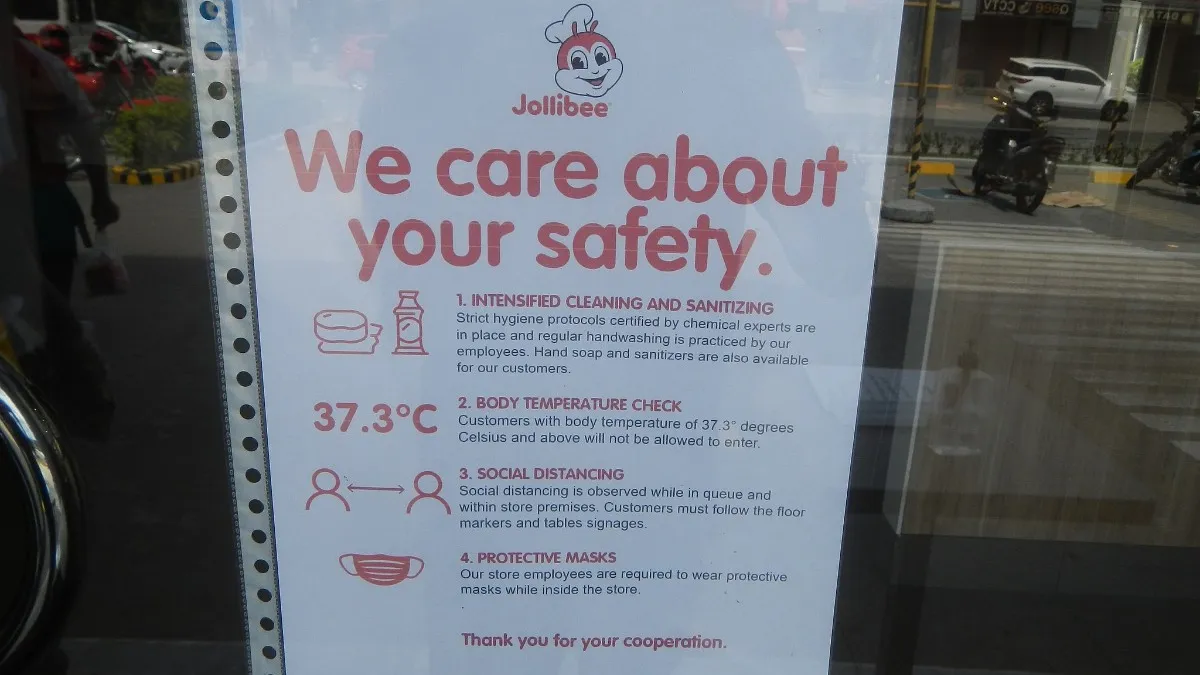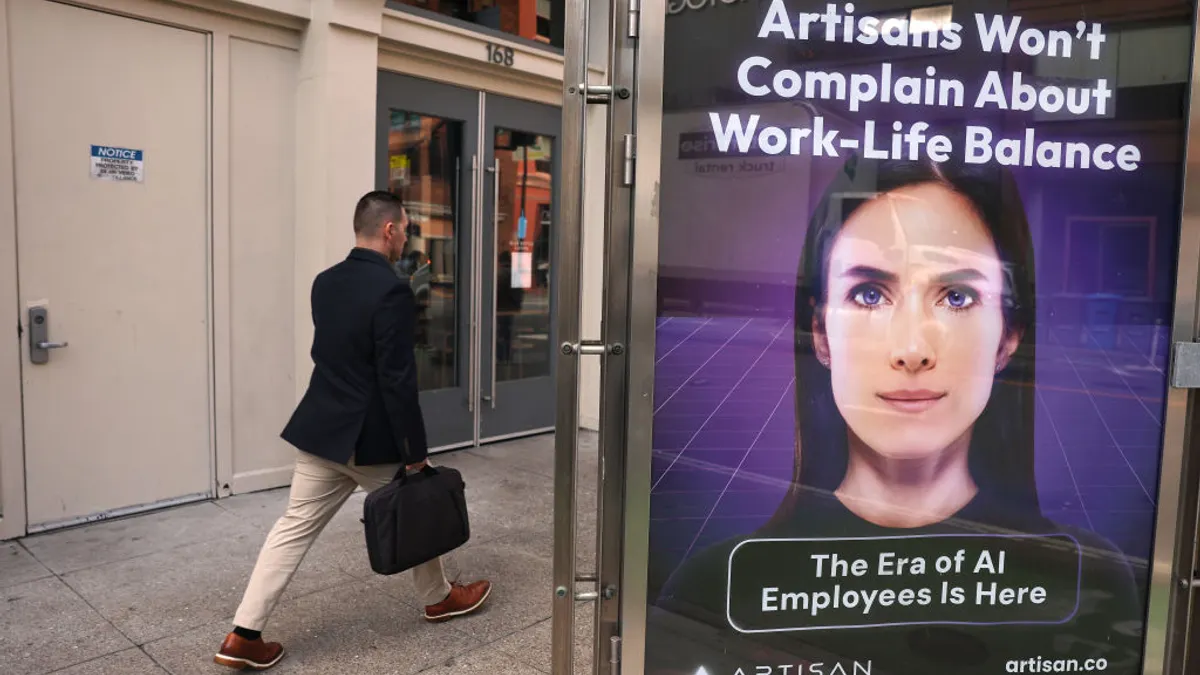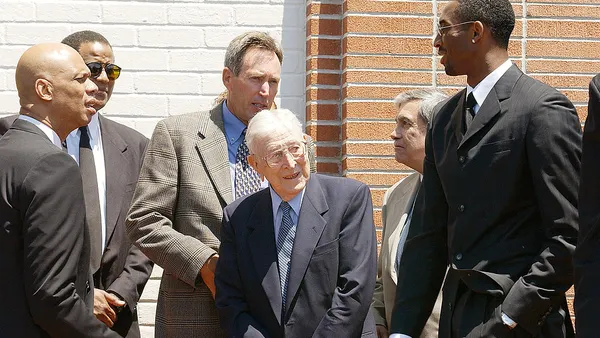Dive Brief:
- Many business leaders (41%) question their ability to enforce COVID-19 safety guidelines in the workplace and 51% do not think employees will follow guidelines, according to a Dec. 14 report from Stericycle. Additionally, 45% of business leaders surveyed said they doubt the safety measures in place are protective enough. Twenty-two percent of employees surveyed said their employer does not offer training on safety guidelines.
- A majority of business leaders (76%) are comfortable asking their employees to come to their place of work, although 58% are concerned that they themselves will contract the novel coronavirus at work. Meanwhile, 47% are concerned employees will take legal action if they contract the virus at work.
- Among employees, 44% of those surveyed said they are concerned other coworkers are not following safety protocols. Twenty-four percent said they would not feel comfortable at work without a vaccine, and 48% of companies said they intend to offer a COVID-19 vaccine at work.
Dive Insight:
As employers continue revising their workplace COVID-19 guidelines, the U.S. Equal Employment Opportunity Commission (EEOC) ruled in December that employers can require proof of vaccination. The EEOC did outline a few exceptions including if employees have religious beliefs or medical conditions that would prevent them from getting vaccinated. Employers enforcing a requirement must show proof that it is being required for job-related reasons.
Experts that spoke with HR Dive cautioned employers to consider the vaccine’s early-stage status, paid time off and how the vaccine becoming widely available might change employers’ plans. At this point, essential workers, first responders and healthcare workers are in the front of the line, but the vaccine is expected to be available to most people later this year.
The Stericycle report also mentioned the role of budgeting in employers’ ability to invest in workplace safety measures. The coronavirus relief bill signed in late-December will bring more funding to employers, including an extension of the Paycheck Protection Program, and may also stimulate economic activity.














